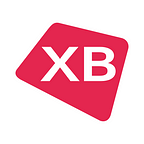React.js for Building Powerful Dashboards. Sharing Experience
Data visualization tools and dashboards, in particular, have become an integral part of any enterprise management process. Every company department is chasing specific goals which require analyzing a large amount of external and internal information. Marketing specialists, sales managers, or financial analysts pursue different goals but have one thing in common: the need to work with an enormous amount of information. The better way to track the status of such goals is to use an interactive visualization dashboard that allows monitoring all related metrics. The question is how to choose a reliable software vendor and suitable technologies for the future web tool to guarantee a better possible outcome.
Developers adore the React JavaScript library. Its popularity has steadily increased in recent years, and we can consider it as one of the most trendy libraries at the moment. It’s easy to learn, highly flexible, and light-weighted which makes it a good option for developing a wide range of web applications. In this article, we’ll consider how React helps our development team to create comprehensive data visualization tools and what benefits it provides to our customers. As an example, we’ll take a look at a dashboard for currency exchange rate management created by XB Software.
Technologies That Helps to Reach Your Business Goals
Our development team uses a broad range of cutting-edge web technologies to create visualization tools that make our customers happy. We won’t describe each of them in details in this article. Instead, we’ll focus mainly on the React library and its core features that allow reaching high performance and excellent quality of data visualization.
Virtual DOM
Among the other features of React, virtual DOM is especially important for interactive dashboards. Such apps have a lot of continuously updating components that allow you to track various indicators simultaneously in real-time mode. Non-stop flow of stock and currency rates or any other data should be displayed on the screen instantly without any lags or freezes. Only in this case, you can be sure that you work with a dashboard that provides the most relevant information and allows making fats data-driven decisions.
The Document Object Model or DOM is the way to represent the object on a web page and allow users to interact with them. Everything that you see in your web browser is a part of a hierarchical tree of elements called the DOM tree.
To make dynamic and interactive web applications such as data dashboards efficient, developers have to do some serious work to ensure that DOM will be re-rendered as fast as possible after the new data appeared. In the case of highly loaded web apps, it can become quite a challenge.
That’s when Virtual DOM comes to the rescue. It’s hosted in memory which allows React to change its state in a blink of an eye each time the actual DOM is changed. Such approach allows React to collect all changes of the web page elements, compare them to the actual state of DOM and refresh modified components.
As a dashboard user, you don’t have to keep this algorithm in mind and even fully understand how it works. React can figure out the optimal way to update the web page components, and all you have to do is to surf on the waves of data.
Isomorphic JavaScript
Isomorphic JavaScript is another cornerstone of high-performance web-based dashboards. When you open an online app in your browser, it takes some time to load the page content from a server. During the loading process, a user can see some fancy loading animations on the screen. In the case of a high-loaded Single Page Application (SPA), this process can take a long time. It may become a serious issue when you want to get fast access to the dashboard with the most recent business data but have to wait until the page is fully loaded instead.
With isomorphic JavaScript, there’s the possibility to use the same code both for the server-side and the client-side parts of a dashboard app. Such an approach allows you to get speed benefits from rendering on the server. After the page is loaded, React can still render the components. Besides the faster loading speed, isomorphic JavaScript helps to speed up development time. With other modern frameworks that don’t support this feature, developers have to create the views for rendering on the server side along with the client-side templates. With React, it’s possible to build components that work on both sides. For you, as a client, it means that you can get an online app that implements described functionality faster and without any harm to the quality of code.
